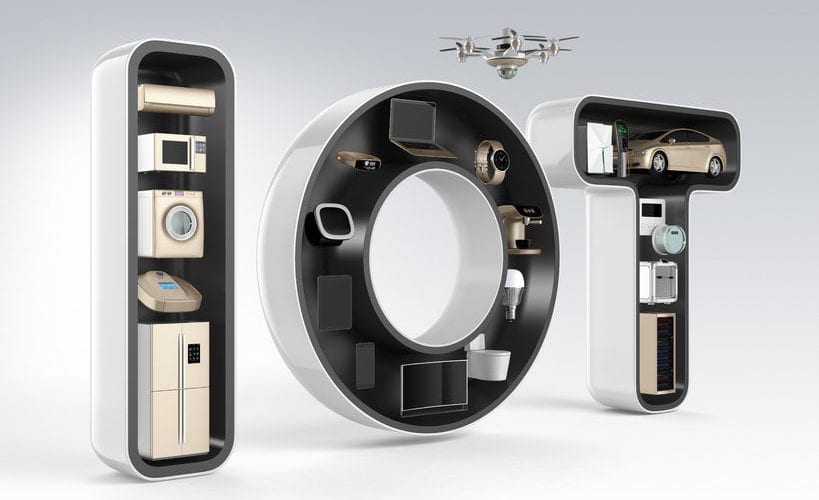4 Industries Benefiting From The Internet Of Things

In this article, Greg Satell (aka Digital Tonto) discusses industries affected by Internet of Things innovation. It is a departure from our usual content, but a perfect weekend read for all geeks. We’re always wondering when these innovations will affect our own business. For now, it remains interesting to see it in action elsewhere. This is another in our “Great Articles You may have missed” series.
Innovation and The Internet Of Things
I was eleven years old when my family got its first computer in 1981. It didn’t do much. Mostly, I used it for writing reports for school and playing video games. My dad also ran some spreadsheets to help him run his business. For the most part though, the family computer was something us kids spent time with.
Things hadn’t changed much by the early 1990’s when I started working either. Computers were mainly tools for automating secretarial tasks, not for professional work. Economist Robert Solow observed around that time, “You can see the computer age everywhere but in the productivity statistics.”
But in the late 1990’s, computers became truly transformative. Combined with the Internet and email, they became conduits to a continuous flow of information that could be processed, analyzed and turned into action. As digital connectivity begins to transform physical machines, it’s likely that we’re now in the early days of a similar productivity boom.
The Sensors That Are Transforming Agriculture
Agriculture is just about the last thing that comes to mind when people think of technology. But in fact, it has always been an engine of innovation. The plow was, of course, among mankind’s first “killer apps.”! Later, the industry became an early adopter of the internal combustion engine and transformed backbreaking work into a highly mechanized field.
It was with that spirit in mind that IBM teamed up with Gallo wines to bring the Internet of Things to the farm. They used a wide array of data from sensors in the soil, along with satellite imagery and weather forecasts. Using the compiled Data, the company designed a “personalized” irrigation system for each block of vines, greatly reducing water consumption and increasing output.
It’s not just industry giants like IBM who are doing exciting work in this area either. Israeli startup Prospera recently attracted $7 million to fund its approach. They install cameras along with other sensors in fields and compare crops “leaf by leaf” with its database of thousands of plants. This is done to identify problems like pests, parasites and nutrient deficiencies.
“We ask ourselves what’s the minimal substantive data that leads to the maximum value,” Daniel Koppel, Co-Founder and CEO of Prospera told me. So far, the approach is working well. Prospera clients get, on average, a 500% return on their investment in the service. And as data and analytics improve, Koppel thinks they can do much better.
Data Driven Ecology
Lake George in upstate New York is just about the last place you would expect to see the future of technology. Sometimes called the “queen of American lakes” for its pristine beauty, its population of about 3500 people swells to nearly 50,000 during the tourist season. Yet its remote location belies a pathbreaking technological experiment going on there.
Under the auspices of the Jefferson Project, IBM has teamed up with Dublin City University Water Institute. Together, they launched a pilot program that uses the Internet of Things combined with advanced analytics, to monitor and manage ecological systems. If successful, it may serve as a model for environmental management around the world.
Traditionally, water systems have been monitored through technicians gathering water samples by hand and sending them to the lab for analysis. Yet with sensors becoming cheaper and more durable, it is now possible to place them in water systems and continually gather data. That, combined with geospatial coverage, can help to create full models of ecosystems. Scientists can then use these to identify problems and intervene before they become full blown ecological disasters.
“Many people believe that water is the new oil,” IBM’s Harry Kolar told me, “because environmental issues are creating problems that affect our economic, political and biological well being. Our hope is that we are developing the technology to manage ecological issues more effectively, at lower cost and with smaller impact on commercial and political systems.”
Driving Productivity In Construction
Brothers Willy and Jabbok Schlacks started EquipmentShare with the idea of making it the “AirBnB” of the construction industry. The concept was simple. Owners of construction equipment can rent out idle machines to get a better return on their investment and renters can reduce costs. Everybody wins.
Soon, it became clear that there may be an even bigger opportunity. The brothers noticed that some potential customers who weren’t interested in renting out their equipment, were willing to pay for the telematics technology EquipmentShare had developed to track the machines and analyze their usage.
Willy Schlacks told me that he sees an even bigger opportunity in more advanced analytics. These included using predictive analysis to lower maintenance costs, using drones to monitor entire construction sites and aggregating data so that contractors can measure their performance against industry benchmarks.
Considering that the construction industry accounts for over a trillion dollars in the US alone, even a small percentage increase in productivity can unlock tremendous value.
Innovation Is Combination
Let’s return to Robert Solow’s observation about computers and productivity. When he made his now famous remark, the work you did on computers was mostly stuck in a box on your desk. If you needed to add data to an analysis, you had to insert a floppy disk or input it by hand. And if you wanted to share your work, you pretty much had to do the same thing.
Computers only became truly valuable when we could start combining them with other things. First, through the Internet, we were able to combine them with other computers. Then we combined them with other technologies, like telephones. Now, we’re starting to combine them with everyday machines.
It is this third wave, commonly known as the Internet of Things, that has the potential to unleash a new revolution in productivity. Yet it is not only technology that we need to combine. To create truly effective systems like those described above, we need computer scientists working with agronomists, environmental scientists, construction engineers and specialists of all kinds.
Innovation, at its core, is combination. And that goes not just for technology, but for people. As the bits in our computers begin to invade the atoms of our machines, we all have a part to play.
Over To You
What unlikely or interesting areas have you seen the Internet of Things have an effect on? Have you seen any innovations that you feel may affect Digital Marketing in the not too distant future? Please comment below.
 Originally published as “The Internet Of Things Is Transforming Industries You Would Never Think Of” on digitaltonto.com and republished here with permission.
Originally published as “The Internet Of Things Is Transforming Industries You Would Never Think Of” on digitaltonto.com and republished here with permission.
Greg Satell is a popular writer, speaker and innovation advisor, whose work has appeared in Harvard Business Review, Forbes, Fast Company, Inc. and other A-list publications. You can find Greg’s blog at digitaltonto.com and on Twitter @Digitaltonto. His first book, Mapping Innovation: A Playbook For Navigating A Disruptive Age, was published by McGraw-Hill in May, 2017.
Image attribution: Copyright: ‘https://www.123rf.com/profile_cheskyw‘ / 123RF Stock Photo
Sign Up For Our Mailing List
To receive more in-depth articles, videos and Infographics in your inbox, please sign up below

Sign up for the newest articles from Curatti, delivered straight to your inbox
